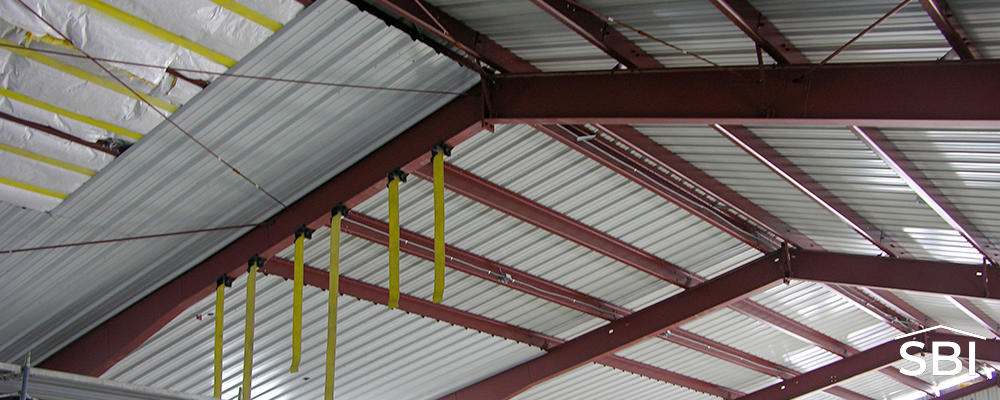How Do You Insulate an Existing Steel Building?

If you have a steel building that lacks insulation or has damaged or insufficient insulation, adding new insulation to it offers many benefits. It makes your space more comfortable and user-friendly, for starters, and it also lowers utility bills, muffles noise, offers tax benefits and prevents the formation of potentially harmful condensation.
Adding insulation to an existing building is called a retrofit job. While it is may be more cost-effective to insulate your building during its construction, insulating it after-the-fact is a common practice, with retrofit jobs comprising more than half of all modern steel building insulation projects. So, how might you go about adding insulation to an existing metal building?
Single-layer Insulation System
Many steel building owners choose to insulate their buildings using single-layer insulation systems in their roofs and walls. This type of system sandwiches fiberglass insulation between your building’s interior framing and exterior panels, and you can choose fiberglass blankets in a wide range of R-values, depending on your geographic location and needs. Affixing a polypropylene vapor retarder over the insulation helps further protect your building against condensation, which helps preserve its integrity and prevent mold growth.
Steel Building Insulation has single-layer systems with R-values ranging from R-8 through R-19. If you want your building insulation to have a higher R-value, you may want to consider a double-layer system.
Double-layer Insulation System
A double-layer insulation system saves energy and allows you to achieve an R-value as high as R-43. Comprised of two layers of insulation bound together with metal bands, a double-layer fiberglass insulation system saves you substantial money on energy costs over the life of your building and is a great option if you plan to live or work in your building.
Energy Saver Insulation System
An energy saver system takes things even further than a double-layer system and is comprised of a network of steel bands, two layers of unfaced insulation and a seamless energy saver fabric on top. This system offers superior thermal performance, and as an added bonus, it is also compliant with Occupational Safety and Health Administration fall protection standards.
Suitable for both roof and wall applications, an energy saver insulation system gives the interior of your steel building a bright, clean finish in addition to the many other benefits it provides.
Because installing new insulation into an existing building does not require highly technical labor, the costs associated with installation are typically low. Installers should follow all OSHA protocols and guidelines when performing a retro-fit application.


